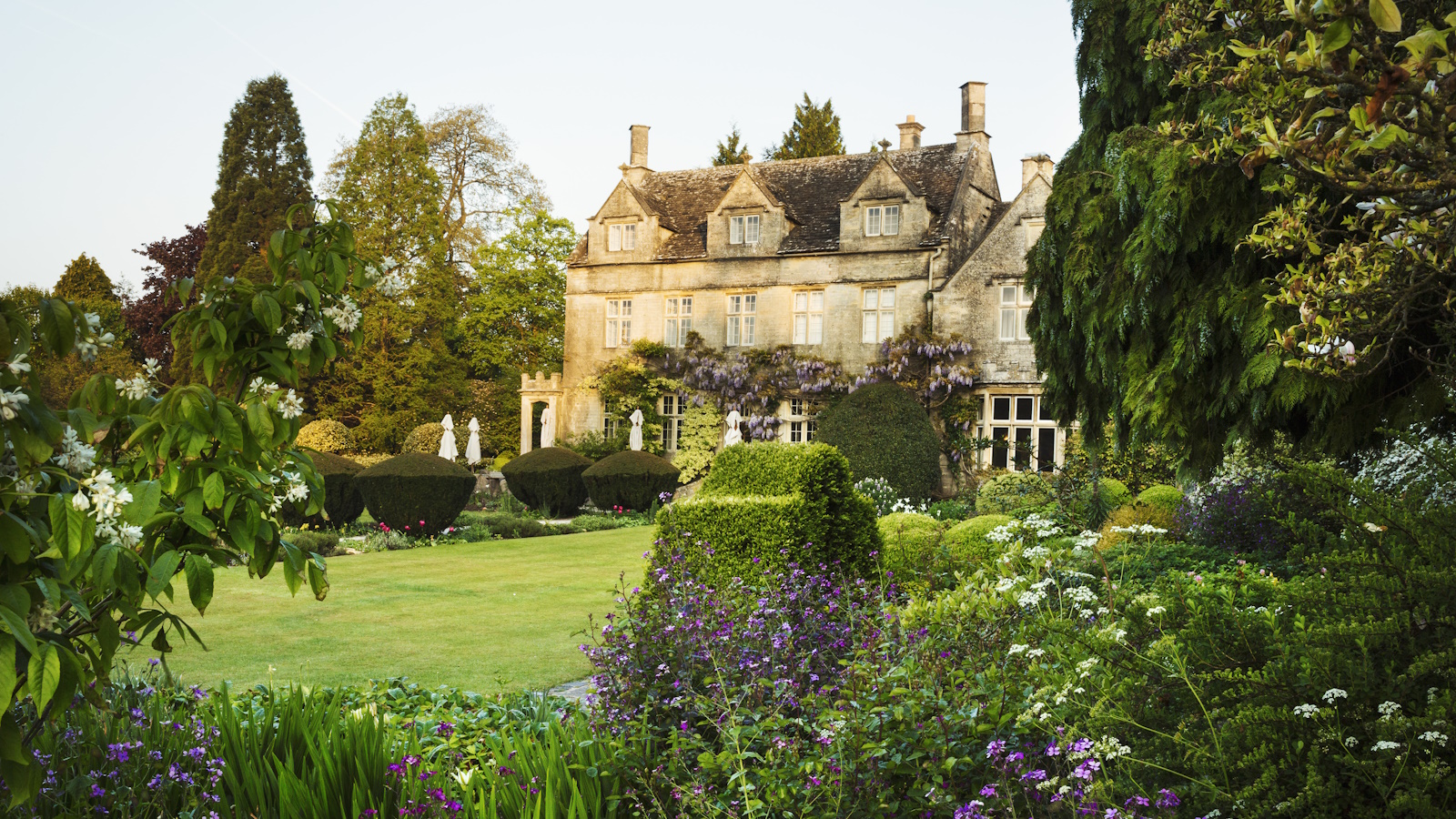
Inspired by the romantic planting schemes and lavish landscapes depicted in Netflix’s hit series Bridgerton, designers predict home gardeners will look to embrace elegant Regencycore planting as part of their backyard ideas this summer as the series returns to our screens in May.
When it comes to defining characteristics of Regencycore gardens, trailing wisteria is sure to be front of mind. The abundance of this opulent vine - its unmistakable amethyst flowers cascading dramatically across the front of Lady Bridgerton’s London mansion - is a frequent sight in the show.
‘Regency design is all about drama,’ says Stacilyn Feldman, a Principal at Oehme, van Sweden landscape architects in Washington, DC. ‘It’s about being bold and doing something unexpected in the garden. It should sweep you off your feet and make you feel a little woozy with wonder - just like the suitors in Bridgerton. The garden should spark curiosity and introduce mystery with twist and turns, tantalizing fragrances and surprising reasons to idle a little longer.’
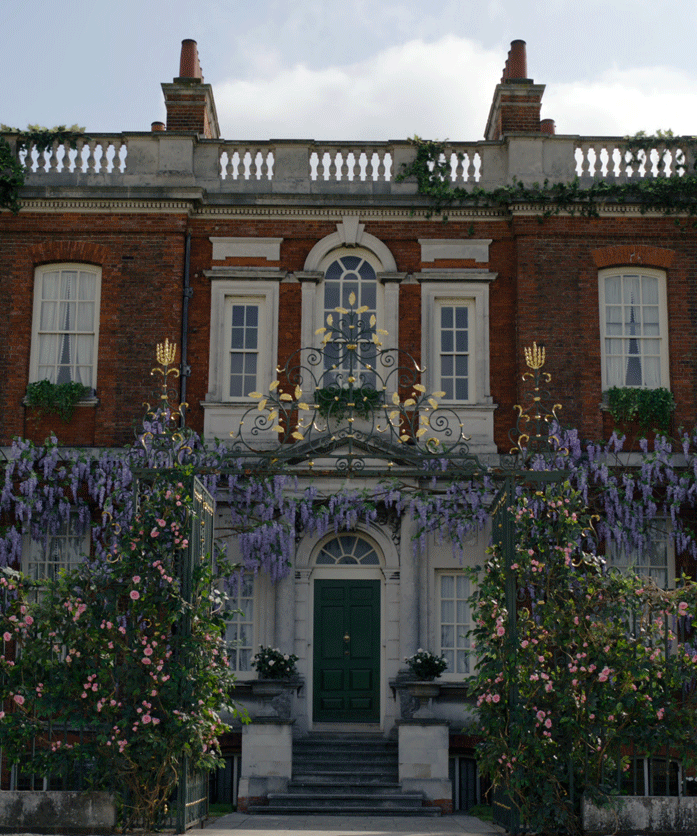
5 ways to embrace the Regencycore gardens trend
Intricate climbing vines is certainly one feature that represents this period. But what other plants and garden features define this era of decadence and opulence? And how can we go about recreating this look in our own backyards? We spoke to landscape designers and professional gardeners to find out.
1. Incorporate lavish climbing plants
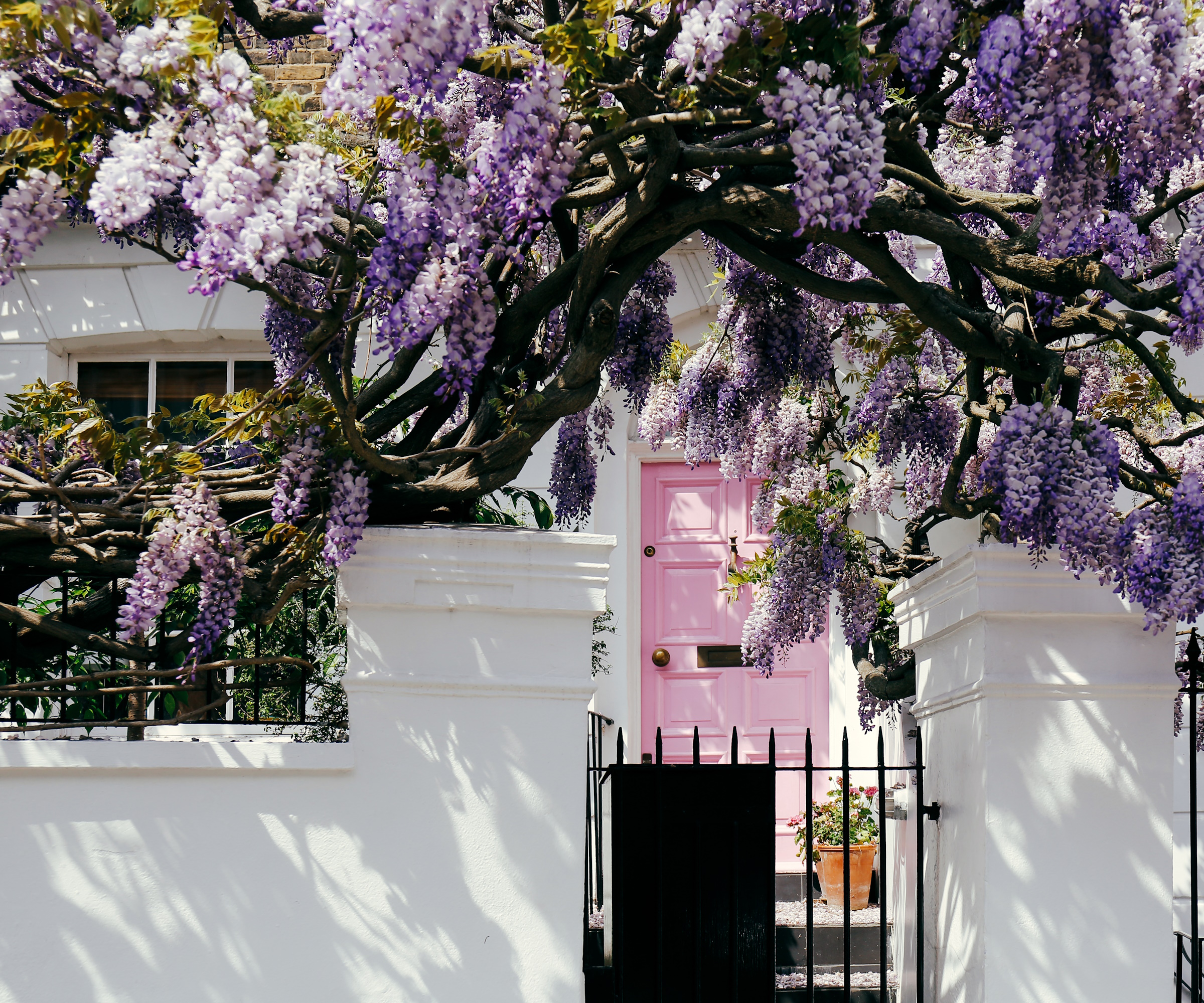
Wisteria isn’t the only elegant climbing plant that exudes romance and luxury. Consider planting climbing or rambling roses, clematis, honeysuckle and ivy, too. You can train these plants to grow and spread naturally over a trellis or pergola by regularly securing the vines with plant ties, such as these reusable ones from Amazon.
‘The defining essence of a Regency garden lies in its enchanting fusion of Georgian romanticism with extravagant layers of resplendent trees, shrubs, and climbing flowers,’ says Brian Sawyer of Sawyer Berson. ‘In productions such as Bridgerton, the set design transports us to this lavish era, draping buildings with cascades of wisteria and roses, seamlessly merging the garden with the house, a departure from the confinements of 18th-century walls.’
Climbing plants can certainly add a sense of wonder to a garden. ‘They defy gravity and tease our minds as they swoop overhead,’ agrees Stacilyn Feldman. ‘They can be finicky though, and we recommend planting them in a pair or trio to space out bloom times and maximize coverage. A favorite combination of mine is Akebia quinata, Clematis ‘Jackmanii’ and Bignonia capreolata. You get color, leaf texture and drama when all they intertwine.
As is the case with growing shrubs and trees in the backyard, patience is needed, explains Thomas Rutter, former professional gardener and content editor at Homes & Gardens. ‘While a wisteria planted today may take several years to achieve the desired look, foliage cover and floral impact will increase year on year.
‘Wisteria is a vigorous climber and so regular pruning is vital to maintain the desired shape, also ensuring that the overall size is kept in check,’ he adds. ‘Wisteria pruning typically takes place twice each year, once in winter and again in late summer. While some maintenance is required, the romantic scent of wisteria blooms makes it worth the effort. After several years, your wisteria will look good even in the winter months, with the old wood appearing web-like adorning walls and structures.’
2. Add a garden structure or a folly
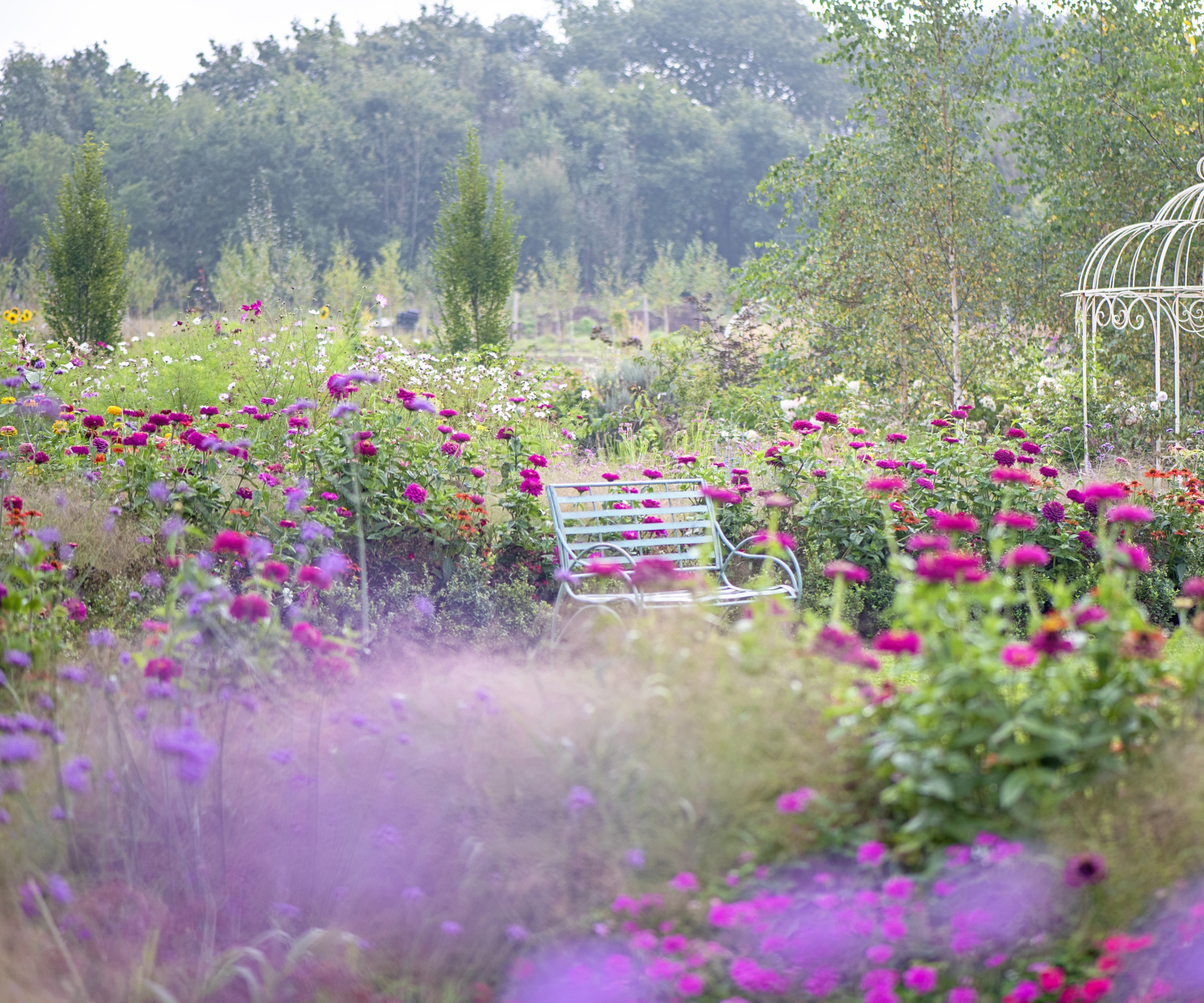
Garden structures such as gazebos, arches, arbors and pergolas are another hallmark of Regency design, but traditionally these kinds of structures were often known as garden follies.
‘They are a tease of a place,’ explains Stacilyn Feldman. ‘You see them in the distance and have a desire to go there, but really it’s not a building you can use for much aside from afternoon tea, somewhere to rest, or a hideaway for a moment alone… or not alone! We like to use garden structures to add intimate spaces and immediate character to a garden.’
To recreate a whimsical feel, you can adorn your pergola with some of the flowering climbing plants mentioned above, such as wisteria, clematis, or passionflower.
3. Create a romantic walkway

Many scenes of the promenading bachelors in Bridgerton are filmed in the well-groomed gardens of Britain's grand country estates, paved with clear paths so that courting couples can promenade without messing up their petticoats.
To get a similar experience in your own garden, choose a path idea that helps create atmosphere and leads the eye through the planting. This will encourage you to linger on other focal points such as fountains, topiary or brightly-bedecked flower beds.
4. Add elegant ornaments for an air of sophistication
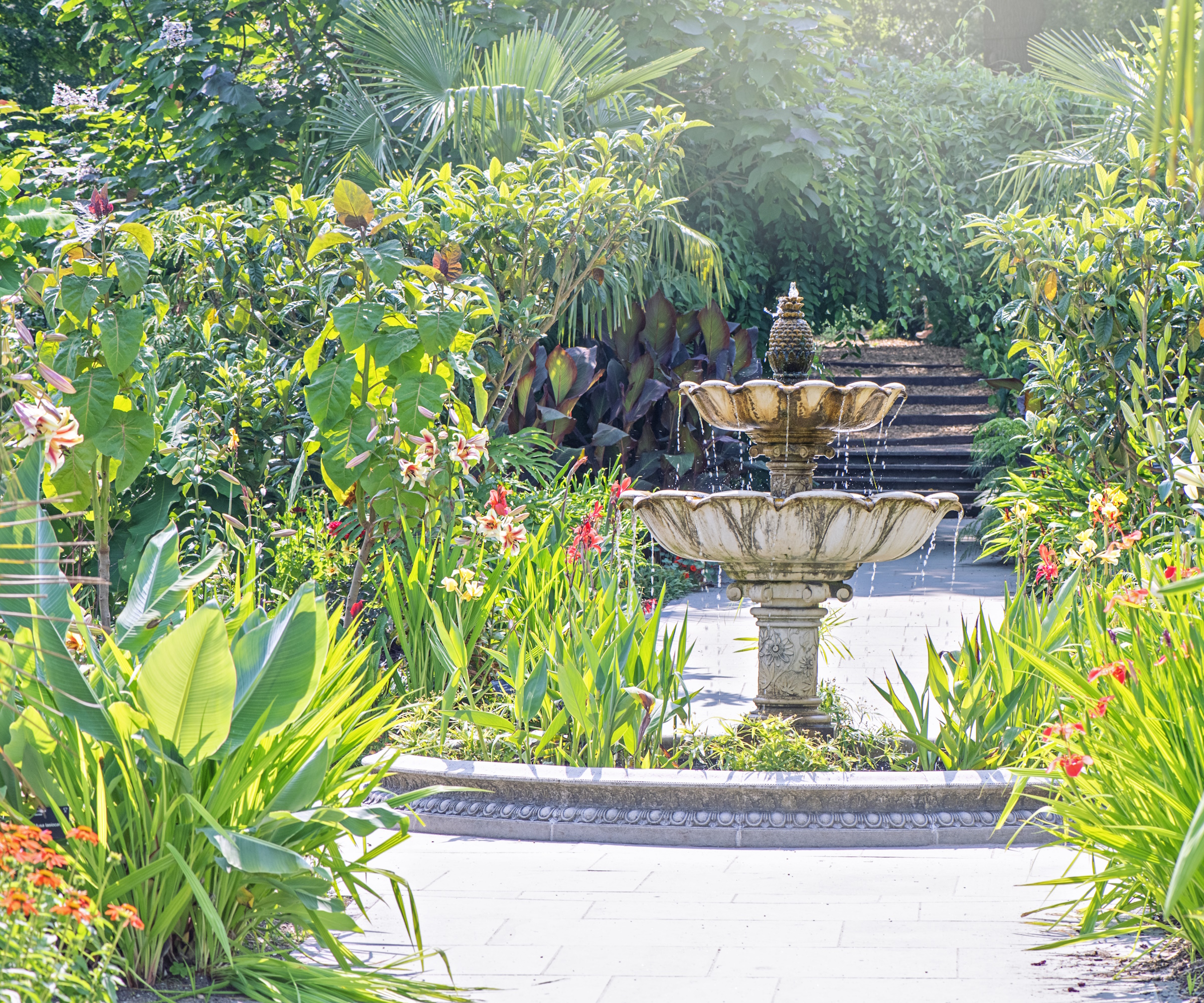
If there’s one thing every Bridgerton-style garden needs, it’s a dramatic fountain. Garden fountain ideas are a Regencycore staple.
Many Regencycore fountains and statues depict mythological creatures and act as garden focal points, with symmetrical landscaping on either side. You could also include decorative ornaments, such as bird baths, sun dials and wind chimes.
5. Choose a romantic color scheme for your plants
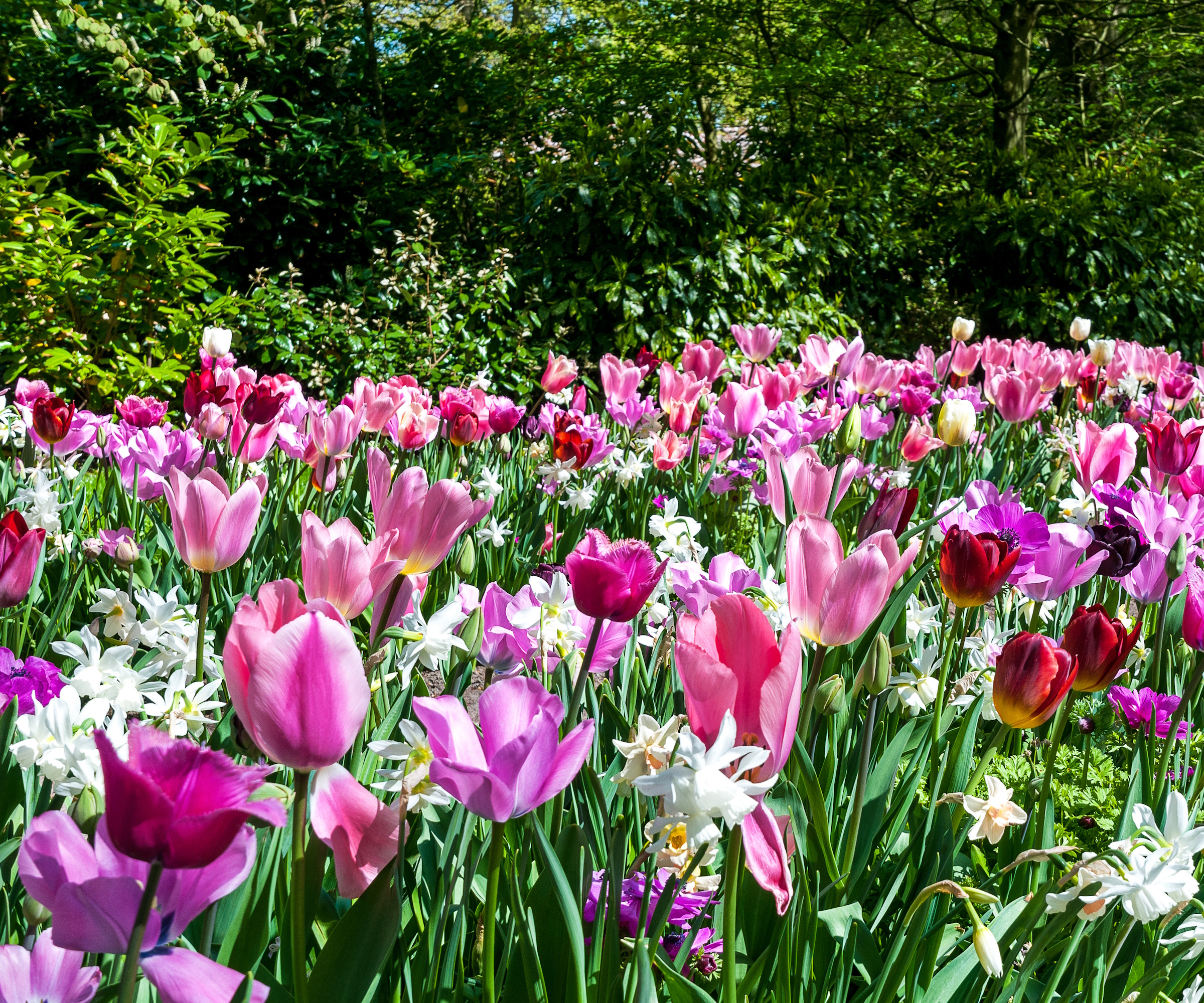
Purple, blue, white and pink tones are seen regularly throughout Bridgerton, as these soft, romantic shades are often associated with the key themes of love and passion.
Tulips were also thought of as the height of luxury in the 1800s, so a simple way to mimic the exuberance and whimsy of the Regency era would be to plant en masse a bed of these spring bulb flowers in pink and purple tones.
‘I think of dreamy colors and fluffy cloud-like plants such as artemesia, hydrangea, peonies, hostas and heuchera,’ says Stacilyn Feldman. ‘At the American Museum & Gardens in Bath, UK, we paired nymph-like gaura with ethereal verbena for a dramatic wind-swept combination.’
Get the Regency-inspired look
The delicate steel scroll patterns along the sides and top of this arch structure create the perfect surface for climbing plants to grow.
This pagoda-style stone fountain is a little on the pricey side, but it would go a long way to adding Regency-style charm to your outside space.
This small, decorative garden trellis is simple to assemble, and you can grow a vast variety of climbing plants, flowers and vegetables up it.
If you're eager to create a Regency look both outside and in, you might be interested in Ruggable's new Bridgerton-inspired collection, which feature shades that are ideal for spring.







